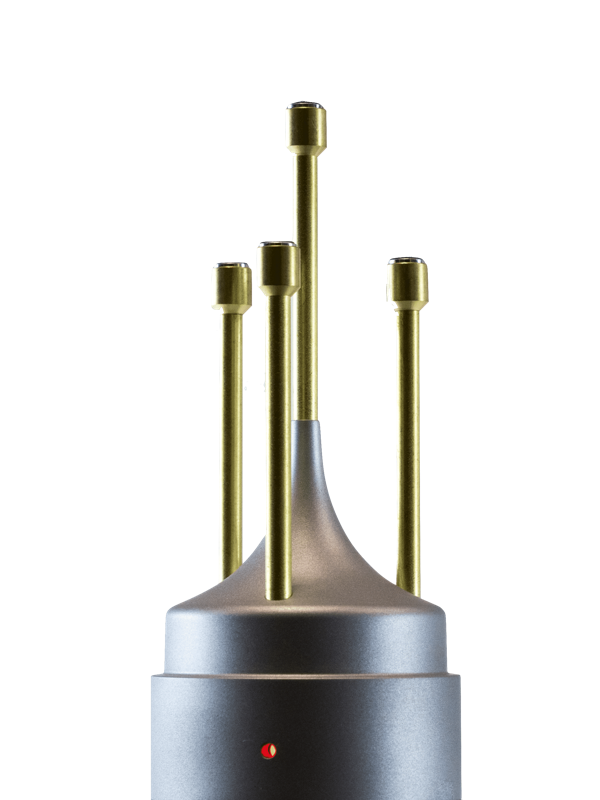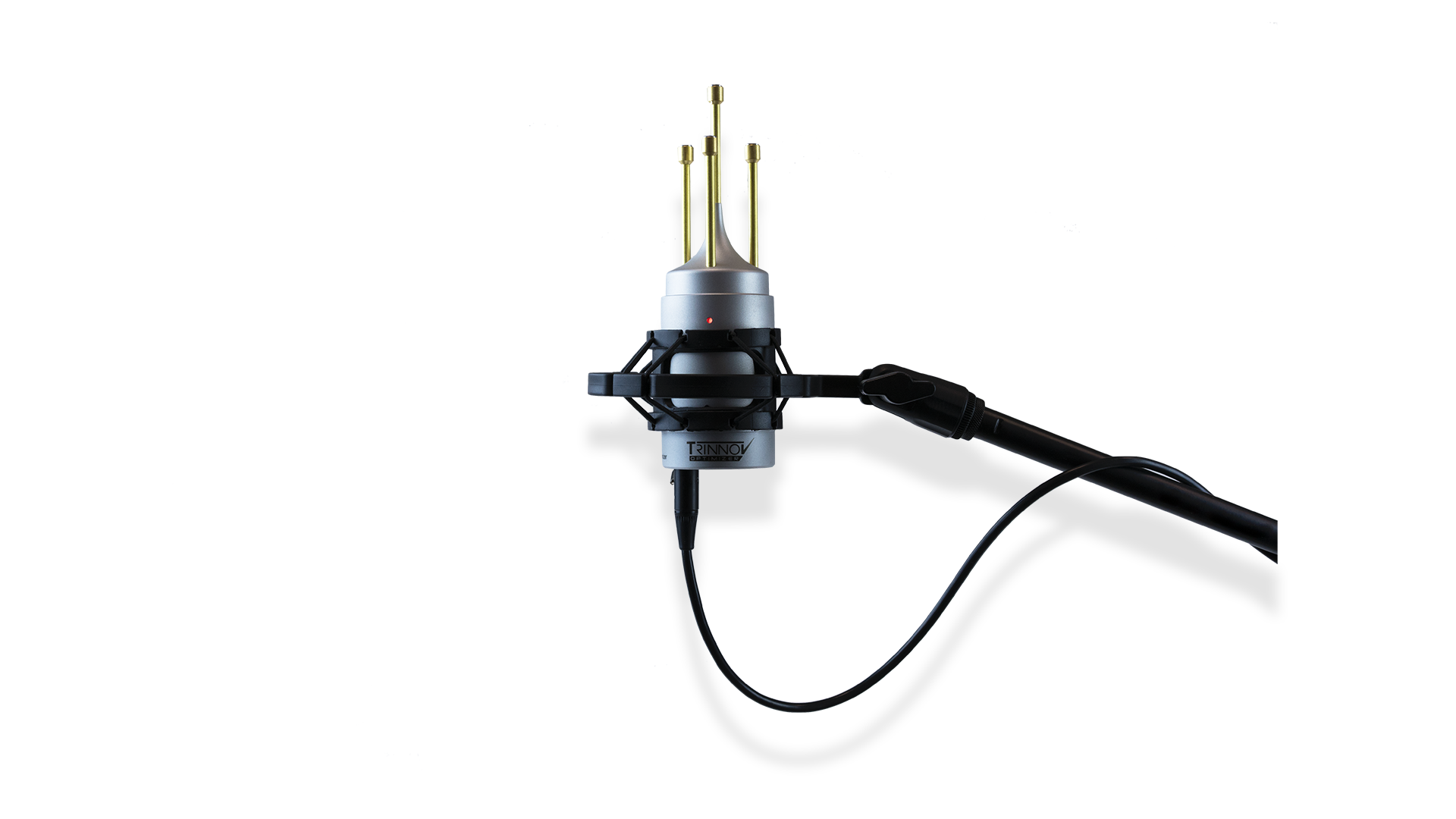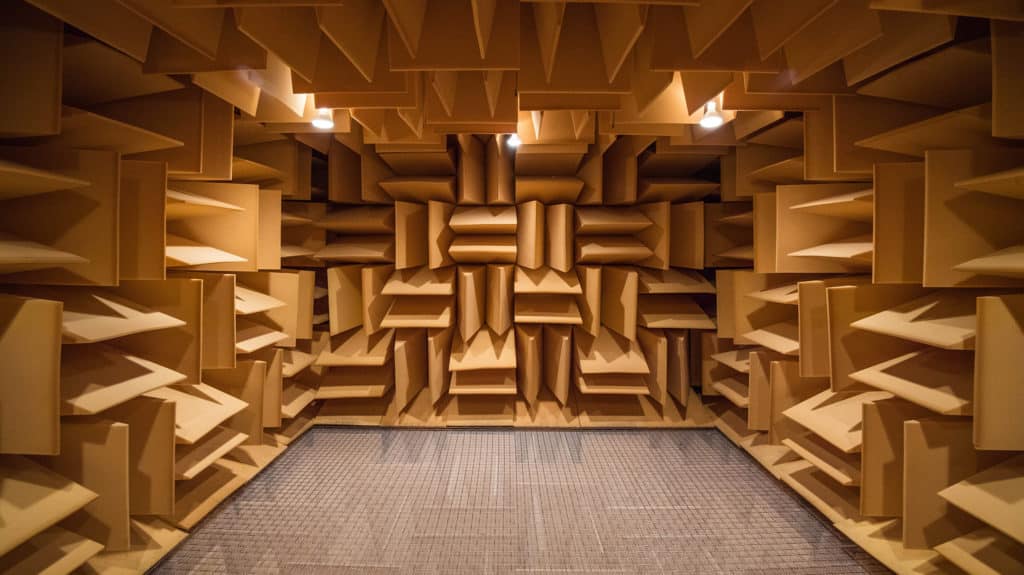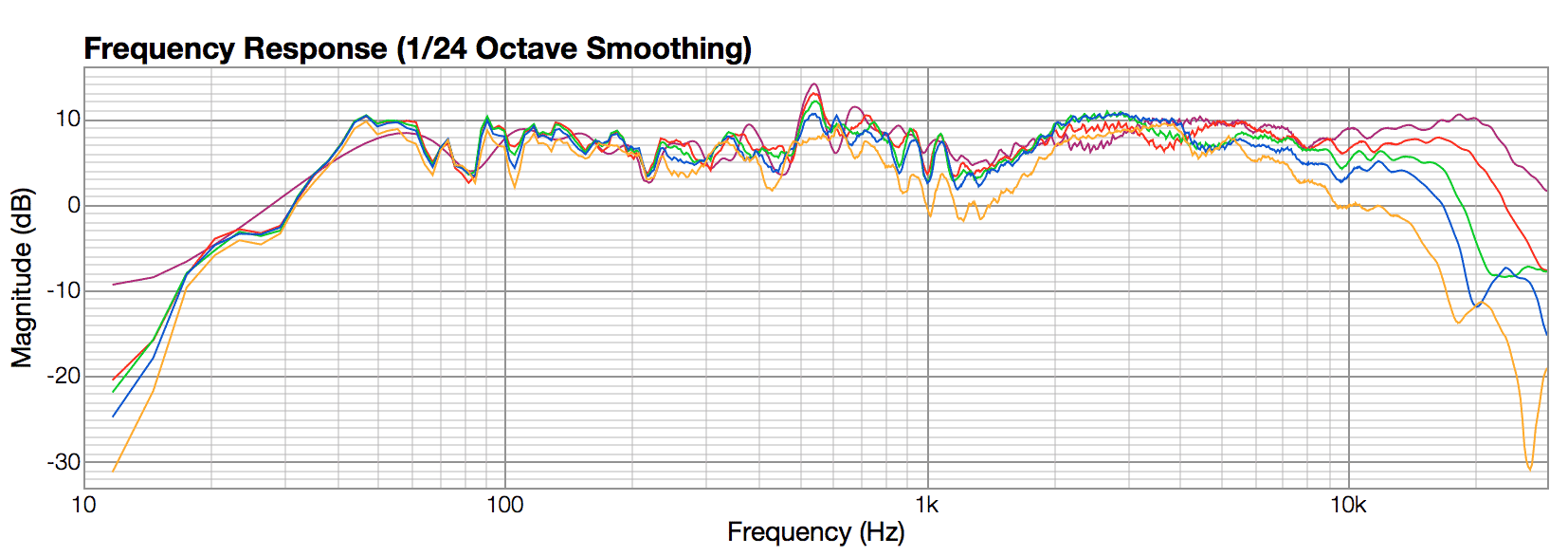Does Room Correction Remove A Loudspeaker’s Sound Characteristics?
17 November 2020
Technical Articles

We often hear this question from customers across all markets. We will do our best to answer this question as clearly as possible in this article. Let’s start with a reminder of a few fundamental concepts.
What Is The Importance Of A Good Loudspeaker?
A loudspeaker consists of many different parts and design choices. Loudspeaker manufacturers need to meet the requirements of their target application, with different pricing and quality levels to meet all budgets. The result is a wide range of loudspeakers available for you to choose from.
As explained below in more detail, selecting a good loudspeaker is fundamental for the end-result. One should certainly not assume a technology like the Optimizer is intended to fix a poorly designed loudspeaker.
On the contrary, the Optimizer builds on the strengths of the speaker (and the room). It is not a replacement for buying good equipment.
How Critical Is The Loudspeaker/Room Interaction?
Well, very critical. It is arguably the single biggest factor in the system’s performance. In an ideal world, an acoustician would design a room based on the characteristics of a loudspeaker. This would give him maximum control of the Loudspeaker/Room interactions.
Even then, too many parameters come into play. So many that it is nearly impossible to perfectly predict the behaviour of any given loudspeaker in a room. This is why in-room measurement provides better results when fine-tuning a system than any pre-calculated or simulation-based models.
All rooms will change the sound characteristic of a loudspeaker quite drastically before even considering the impact of a technology like the Optimizer. In fact, the Optimizer’s purpose is to make sure the loudspeaker will work to the best of its ability in any given acoustic environment.
To fully understand the sound you get from your speakers and Loudspeaker/Room Optimization, one first needs to acknowledge the importance and interactions between every element within the following chain: Loudspeakers → Room → Listening position.
Loudspeaker/Room Optimization effectively measures this whole system. It then processes the signals fed to the loudspeakers to compensate for the negative interactions between the loudspeakers and the room at the listening position

We use our iconic 3D Measurement microphone to capture the in-room response of your Loudspeaker/Room system at the listening position. Every microphone is individually calibrated to ensure the most accurate measurement.
What Is The Impact Of Loudspeaker/room Correction On The Sound Signature Of A Loudspeaker?
Going in more details, let’s describe what makes the sound characteristics of a loudspeaker and the impact of Loudspeaker/Room Optimization on each of these characteristics.
For a better understanding, we will classify the characteristics of a loudspeaker on which technology like the Optimizer can have a high, moderate, or low impact.
Highly-impacted Characteristics
The Optimizer’s greatest impact will be on the speaker’s characteristics that are fully coupled with the room.
Overall Tonal Balance
Let’s start with the obvious and with what people tend to consider as the most important contribution to the sound characteristic of a loudspeaker.
Loudspeaker manufacturers usually provide frequency responses for their speakers as part of their specification. Most people tend to consider this data as the main characteristic of a loudspeaker. However, does this only data reflect all the decisions made in terms of driver technology, typology, material, cabinet shape and characteristics, crossover implementation?
Also, is that frequency response relevant once you install the speaker in a room? Maybe, but only in a very, very large room, with speakers positioned far from any surface, and/or measured in the near field…
So, does the frequency response of a loudspeaker describe its sonic signature? To a degree, yes. But that’s an incomplete answer given the dramatic contribution of most rooms.

This frequency response is typically measured in an anechoic chamber. This could be interpreted as the frequency response of the direct sound of the speaker.
Still, you may ask how does the Optimizer affect the overall tonal balance of a loudspeaker?
Short answer: it can affect it greatly, but it is up to the calibrator to decide how much.
The default parameters will make the tonal balance of the Loudspeaker/Room system flat. This is by no means our recommendation, except for near field studio applications where a flat direct response is recommended.
This being said, the flexibility of the Optimizer is one of its greatest virtues: you can adjust the tonal balance any way you like depending on your application and personal preference. You can even save multiple presets and recall these different settings on the fly.
Now, given that what we measure (and hear) is not the speaker alone but the speaker in the room, the question is to know whether such a technology alters the nature of the loudspeaker or mitigates the natural response of the room. There is no easy answer but we can say that whilst the room alters the natural response of the loudspeaker, the Optimizer will mitigate its influence to reach optimal performance, retaining the speaker’s characteristics and even unleashing its full potential.
Note that the Optimizer includes a specific mode called “According to LR” which will apply the averaged response of the Left and Right speakers as a target curve for all speakers. This mode retains the initial response of the speakers in the room whilst compensating for phase issues above 150Hz (default but adjustable). It also compensates for some problems occurring in the low frequencies, which are far more subject to the room’s acoustics. This mode has benefits and achieves what many calibrators tend to aim for: compensating for the room’s modes in the low frequencies whilst processing as little as possible above the Schroeder frequency, yet aligning all speakers.
To better understand frequency response, please refer to the directivity and dispersion diagram section. This section provides a deeper explanation of frequency response, considering frequency over time.
Phase Response & Group Delay
As with the overall tonal balance, the phase response you will measure in the room will differ from the phase response provided by the speaker manufacturer when available.
Note that the group delay is mathematically derived from the phase and therefore closely related. Whilst the phase response shows you the phase rotation across the bandwidth given in degrees, the group delay shows the relative arrival time of all frequencies usually given in ms.
The design of the loudspeaker will determine how the phase rotates across its bandwidth.
The crossover filters themselves introduce phase rotation. Typically, a 2-way or a 3-way speaker will show very different phase responses. You will see more phase rotations across the bandwidth as you introduce additional crossover filters.
Some speakers have built-in processing to compensate for the phase issues introduced by the crossover. Some use built-in analog filters whilst others include DSP into their speakers.

Room Correction is definitely not a substitute for good acoustics and proper loudspeaker design. It can improve both. It works even better with a system that is properly designed in the first place.
How does the Optimizer affect the phase response of a speaker?
The phase response will be impacted by the multiple reflections occurring in the room.
The Optimizer is the only system on the market that not only compensates for the phase response of a loudspeaker but actually shows you what it does with acoustic graphs where you can see the before and after phase response for any given measurement position.
Although less phase correction will be required with speakers delivering linear phase response, the in-room measurement can yield even better results by mitigating some room-based phase errors, namely inter-speaker phase mismatch, leading to cancellation in the most extreme situations.
Impulse Response & Transients
The impulse response of a loudspeaker gives you an indication of how well it can handle transients and provide a clean and powerful impact.
A clean impulse response also gives you some indication in terms of time alignment between drivers as incorrectly aligned drivers in a speaker will show two distinct impulses rather than a single powerful impulse.
The impulse response also shows you early reflections and other problems occurring in the room that may alter the inherent speaker’s performance in terms of transients and imaging as impulse responses carry localisation cues.
How does the Optimizer affect the impulse response of a speaker?
Here again, the impulse response measured at the listening position does not only indicate the impulse response of the speaker alone but the way the room impacts it.
This is one of the areas where such technology performs extremely well, compensating for the group delay and therefore realigning frequencies so that all frequencies hit the listening area simultaneously, greatly improving staging and clarity. Again, it does not “fix” a bad speaker; it enables its full potential at the measurement(s) position(s). Think of it as correcting the bad things that rooms do to otherwise good speakers.
That processing applied to the signal in the time domain affects the phase response, group delay, and the impulse response.
Active Crossovers
Most loudspeakers are delivered with analog passive crossovers built into the speakers.
However, some higher-end speakers designed for specific applications such as cinema or sound reinforcement are expected to be driven actively with a third-party device. Active crossover management gives more control to the calibrator.
Doing so enables the calibrator to optimize the directivity of the speaker at the cross-over frequency. (It also eliminates any potential losses in the passive crossover components.)
Note that the directivity and off-axis response is particularly sensitive around the crossover region, hence the need for a properly designed speaker and room.
How does the Optimizer affect the crossover of a speaker?
There are two scenarios here.
With passive crossovers, the Optimizer will mostly compensate for the subsequent phase rotation introduced by the crossover filters, as explained above.
With active crossovers, the Optimizer includes a unique semi-automatic crossover calibration system that will greatly reduce the time required to align the crossovers.
It will make sure all drivers are correctly time-aligned (thus presenting a single, clean and powerful impulse) and deliver similar sound pressure across the listening area. This results in in better directivity control around the crossover region.
The Optimizer can do so with up to 4-way active loudspeakers.
Moderately Impacted Characteristics
Directivity & Dispersion Diagram
In addition to the tonal balance and on-axis response, some loudspeaker manufacturers provide frequency responses for their speakers, measured off-axis at various angles, both vertically and horizontally.
From a performance standpoint, the off-axis responses, and their consistency with the on-axis response, in particular, are arguably more important than the tonal balance of the speaker itself.
It is very easy to correct for a bad frequency response for one single listening position with processing, but it becomes extremely difficult to compensate for a speaker with an inconsistent off-axis response across multiple positions as both will combine very differently in the room, resulting in a very unbalanced and uneven sound across the different seating positions.
Furthermore, in most cases, an inconsistent off-axis response will make the speaker even more placement sensitive and emphasize acoustic problems in the room. This is why an acoustician or a system designer should ideally design a room knowing the speakers’ characteristics including their off-axis responses.

Example of on-axis & horizontal off-axis responses of a same speaker
How does the Optimizer affect the directivity and/or off-axis response of a speaker?
To make things clear, the Optimizer does nothing to change the directivity of a speaker, except when taking care of the active crossovers where the ability to drive each driver separately enables us to “steer” the optimal summation of the loudspeaker drivers at the crossover frequency. However, once again, it can mitigate the effects.
1 - Time/frequency Analysis
When it comes to the dispersion diagram of a speaker, one needs to understand the power and relevance of time/frequency analysis. Rather than looking at a single frequency response measured at the listening position, we use smart time/frequency windowing techniques to extract what is then considered as the “direct” sound of the speaker and compare it to the “power response” of the room which is effectively the direct sound combined with all the reflected sound and late reverberation.
Doing so allows us to assess how inconsistent the speaker and the room responses are and to optimize the sound accordingly across multiple positions.
Rooms where the direct sound and reflected sound are consistent are considered easy rooms. The correction will perform very well right from the start and the amount of fine-tuning required will come down to subjective taste and personal preferences over the tonal balance of the system.
The more inconsistencies between the direct and reflected sound, the more likely you are to obtain an unnatural sound as most systems (and even a human EQing a system with an RTA measurement system) may easily end up over-processing the sound, overlooking the nature and the origin of the acoustic problems which are occurring between the interactions of the speakers and the room in the first place.
Even though there is nothing digital processing can do about the directivity of the speaker, what we can do is to mitigate the effects of the speaker’s directivity in the room and across the different measurement positions.
Let’s go one step further on off-axis response and steering with a bit of psycho-acoustics. What is heard is not the directivity of the loudspeaker directly but how the loudspeaker “illuminates” the room to create the first reflections. What is heard is the first reflection, not the room alone, not the directivity alone. In free air, directivity control does not matter unless you need to optimize the coverage of your system. The Optimizer can reduce the level of certain early reflections and therefore provides a result similar to controlling the directivity.
Anyways, it’s always been our position to recommend anyone to embrace a design-first approach rather than relying on any room correction technology to fix fundamental issues like this one. Digital processing is no substitute for good passive acoustics. Likewise, a proper acoustic design doesn’t mean room correction is not relevant or required. Passive and active acoustics are complementary and loudspeaker/room correction will improve a system, even more, when starting from a sound baseline.

Before and After Trinnov Optimization
How does the Optimizer affect the crossover of a speaker?
There are two scenarios here.
With passive crossovers, the Optimizer will mostly compensate for the subsequent phase rotation introduced by the crossover filters, as explained above.
With active crossovers, the Optimizer includes a unique semi-automatic crossover calibration system that will greatly reduce the time required to align the crossovers.
It will make sure all drivers are correctly time-aligned (thus presenting a single, clean and powerful impulse) and deliver similar sound pressure across the listening area. This results in in better directivity control around the crossover region.
The Optimizer can do so with up to 4-way active loudspeakers.
Moderately Impacted Characteristics
Directivity & Dispersion Diagram
In addition to the tonal balance and on-axis response, some loudspeaker manufacturers provide frequency responses for their speakers, measured off-axis at various angles, both vertically and horizontally.
From a performance standpoint, the off-axis responses, and their consistency with the on-axis response, in particular, are arguably more important than the tonal balance of the speaker itself.
It is very easy to correct for a bad frequency response for one single listening position with processing, but it becomes extremely difficult to compensate for a speaker with an inconsistent off-axis response across multiple positions as both will combine very differently in the room, resulting in a very unbalanced and uneven sound across the different seating positions.
Furthermore, in most cases, an inconsistent off-axis response will make the speaker even more placement sensitive and emphasize acoustic problems in the room. This is why an acoustician or a system designer should ideally design a room knowing the speakers’ characteristics including their off-axis responses.

Trinnov's unique automated active crossovers
2 - Multipoint Measurement
In rooms where major inconsistencies are occurring, we strongly recommend performing multiple measurements to further assess the amount of inconsistency across the different listening positions. The more inconsistencies across the different positions, the less correction will be applied. The processing will be naturally limited to a relevant level based on what some people call “spatial averaging”.
Pushed to the extreme, making too many measurements across the room will not only limit the correction but simply disable it. To a degree, it’s a safer way of optimizing a Loudspeaker/Room system and keeping the natural sound but in our opinion, a poor way of proceeding as the whole benefit of this type of technology is compromised as you neutralize it completely.
As always, it is important to make an informed decision as to the number of measurements and where the measurements are taken.
3 - Diffraction
Acoustic diffraction occurs over the edges of the speaker cabinet.
The sound waves produced by the loudspeaker propagate along the cabinet’s surface until they meet an edge, which could be an obstacle or an opening. At this stage, some energy will be diffracted to multiple directions, with a lower density.
How does the Optimizer affect the diffraction occurring out of a speaker?
The Optimizer will compensate the diffraction reasonably well, although the main factor will be the wavelength. The longer the wave, the more processing it would require to compensate.
Therefore, diffraction in high frequencies is correctly compensated for, whereas diffraction in the low frequencies is more difficult with the default parameters.
Low/null Impact Characteristics
When it finally comes to the pure electro-acoustic & mechanical characteristics of a loudspeaker, there is little to nothing that can be achieved electronically.
Dynamic Range
The dynamic range of a loudspeaker is the difference between the quietest and the loudest sound it can reproduce.
For a high dynamic range, one needs to make sure that the loudspeaker’s power handling, sensitivity, and power amplification are correctly specified. Then the room, the electronics, and the loudspeaker must be able to all play as quietly as possible without noise whilst maintaining the ability to play extremely loud without distortion or failure.
Whilst digital processing could reduce the dynamic range of a loudspeaker by compressing the signal it is reproducing, it is not possible to expand the dynamics of a signal artificially without severe, audible artifacts.
The Optimizer does not apply any kind of dynamic processing, be it compression, limiting, or expansion.
Non-linearities
Digital room correction cannot adjust non-linearities of a loudspeaker based on an in-room measurement.
Some non-linearities could and should instead be optimized electronically with DSP specifically programmed by the speaker manufacturers.
Distortion is probably the most well-known non-linearity and distortion is definitely not a parameter a digital room correction system considers or can impact in any way. Distortion is purely an electro-acoustic phenomenon depending on the drivers themselves.
Speaker Cabinet
A good loudspeaker cabinet will have as little resonance as possible.
This will depend on the material chosen to build the cabinet, its shape, etc…
If resonances occur, the frequency response of the loudspeaker will be impacted. Whilst there is nothing we can do to prevent non-linear vibrations from happening, the Optimizer can compensate for the impact linear resonances will have on the frequency response.
Driver Technology & Material
As a result of many aspects described above, a diamond tweeter will sound very different from a beryllium tweeter. A 2-inch mid-range dome driver is recognizable from a smaller one. Think of the sonic difference between a compression driver with horn, a ribbon, or AMT driver to name a few other different and popular technologies. Each has its own sound, benefits, and applications.
In other words, two speakers may have the same tonal balance on paper but sound entirely different based on the type of drivers they use.
These characteristics are purely physical and almost impossible to measure precisely as the are a combination of various factors.
Digital Room correction will not make a dome tweeter sound like a horn, it won’t make beryllium sound like a diamond. These different sound characteristics are easily identifiable and yet as subtle as they are difficult to describe.
Conclusion
Does Loudspeaker/Room Optimization change the sound characteristics of a loudspeaker is a legitimate question although it is not the right one if we consider the impact of the room itself on the original sound of any loudspeaker.
Can Loudspeaker/Room Optimization harm the sound of a loudspeaker? Certainly, it can if not done properly, just like a badly designed room will destroy the performance of the best loudspeaker on the planet.
Instead, why not ask what’s the purpose of this technology and the benefit you can get from it? In most cases, a technology like the Optimizer will in fact do justice to the loudspeaker you have carefully chosen and get you closer to the intended response the loudspeaker manufacturer had in mind rather than pushing you away from it.
Does Loudspeaker/Room Optimization make all speakers sound the same? With the same target curve in the same room, they most certainly will sound more similar to another. Will it completely remove their characteristics? No, as some characteristics of a loudspeaker contributing to its unique sound signature are not even considered, measured, or compensated for.
It mostly comes down to the tonal balance and the way the system is calibrated, and by whom.

